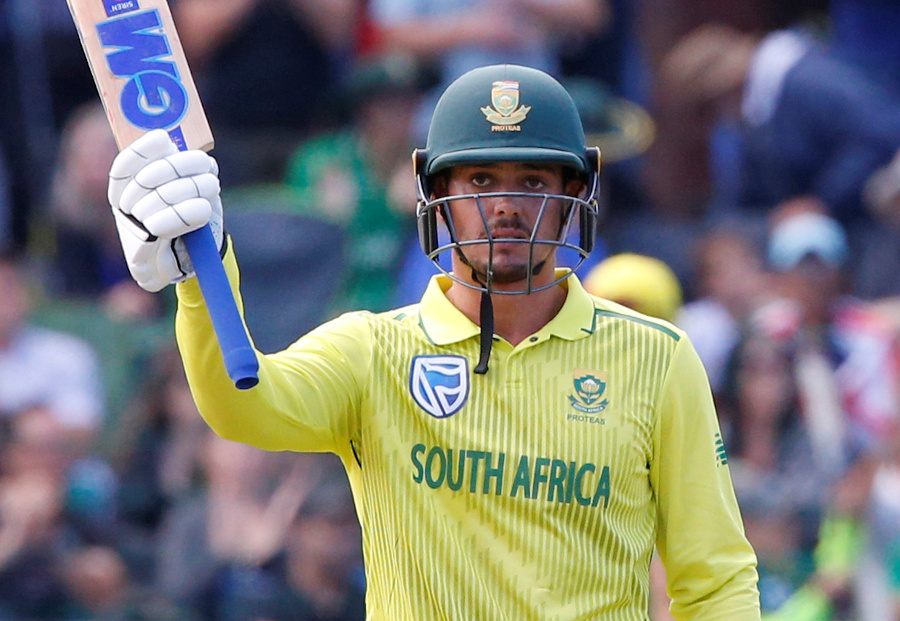With the schedule cut short due to the coronavirus pandemic, and the Proteas back from India seemingly before they left, what lessons can local cricket fans mull over across the winter, asks LUKE ALFRED.
One of the first things to note about the national side under Mark Boucher – and something of which he must be painfully aware – is that there once was a time when South Africa scored runs relentlessly.
Gary Kirsten, Jacques Kallis, Graeme Smith and, latterly, Hashim Amla, all scored double centuries in Test cricket and heavily in white-ball forms. The old adage that ‘batsmen set up matches, while bowlers win them’ has never been more apposite when one looks back on what increasingly looks like South African cricket’s Golden Age.
READ: Boucher right to cast net wide
In keeping with this, it is scary to note that the highest Test score by a Proteas batsman – Dean Elgar’s 160 in the first Test against India in at Vishnakapatnum – happened in the very first Test of the season, and wasn’t remotely threatened in the Test series against England.
There followed only three other matches in which South Africans scored runs of note: the Newlands ODI against England in early February, in which Quinton de Kock scored 107 and Temba Bavuma was horribly unlucky to be bowled by Chris Jordan for 98, and matches one and two of the ODI series against Australia, which followed England’s departure.
In the first of these, Heinrich Klaasen scored 123 not out in the opener in Paarl, while Janneman Malan, after bagging a duck at Paarl, turned it all around in Bloem, where he plundered 129.
Although South Africa didn’t win in Vishnakapatnum, they had first-innings parity (their 431 playing India’s 502-7), while the three ODIs mentioned all resulted in Proteas wins: they won by seven wickets (with 14 balls to spare) at Newlands against England, and by 74 runs and six wickets at Paarl and the Manguang Oval, respectively.
The moral of the story is that whether batting first or second, the run-scoring burden needs to be lifted off De Kock’s shoulders, and it is only when the Proteas are consistently successful with the bat that they will begin to win in long bursts rather than erratically (the Aussie series excepted) as is the case currently.
Klaasen threatened to unfurl a big one against England but it needed Australia to tease out the best in him. With Malan breathing down Aiden Markram’s neck – perhaps it’s the other way round? – suddenly the batting, and certainly in the shorter forms, looks more solid than it has in a while.
Director of cricket Graeme Smith has always been a huge David Miller fan and Miller, after being memorably left out of the opening CWC game against England last winter, seemed to have reclaimed some of his old swagger.
Jon-Jon Smuts, despite some weight issues complicated by his diabetes, had a handy close to the season, particularly in the Potch game against Australia, and you sense he will be around for a while at least.
One of the biggest discoveries of the summer, however, was Bavuma.
All the toing and froing on Bavuma’s omission from the Test side against England at Newlands over the New Year had a nasty racial edge. Some dotty things were said and written. But, credit to him, Bavuma did exactly what was asked of him – to go back and score runs in domestic cricket – and he returned before the series was over.
WATCH: AB goes big at the WACA
Before he got injured, it was in 50-over cricket that he really prospered though and, after a marginal Test career, he might finally have found his form. Zubayr Hamza needs to be given an extended run in Test cricket and Bavuma now looks like being a regular feature of the ODI side, both fulfilling important roles as Faf du Plessis searches for meaning in the game.
On the bowling front, Vernon Philander’s retirement came as no surprise.
For all the impressive numbers, the ‘Surgeon of Ravensmead’ seemed to struggle the further the England Tests progressed. His retirement will give an opportunity to a hungrier young pretender, but there’s a shortage of bowlers in the Vern mould. Boucher desperately needs a medium-fast bowler who can hold an end and nibble the ball around because with Anrich Nortje, Kagiso Rabada and Lungi Ngidi, there appears to be a sameness.
The Proteas attack desperately needs variation, which is why Tabraiz Shamsi’s increasing maturity was heartening, and why an otherwise potentially important bowler of the future, such as, say, Beuran Hendricks, needs to work on his consistency.
All in all, though, despite the off-the-field stresses, the season has been clarifying for Boucher and those around him.
We now know far more than we did six months ago, when Elgar scored that heroic hundred in Vishnakapatnum.
COACH SPOTLIGHT: Robin Peterson
Photo: Rogan Ward/Action Images via Reuters






